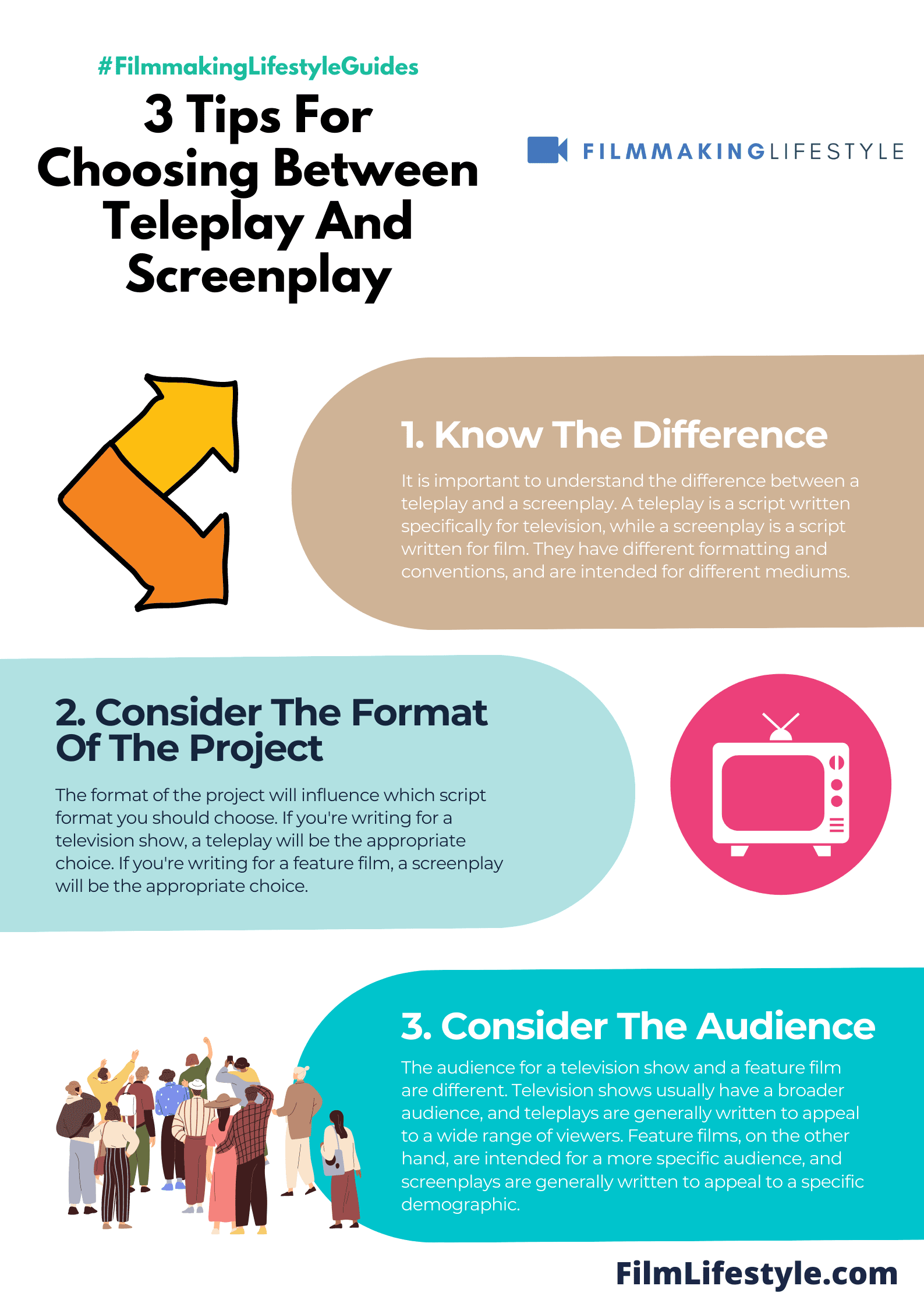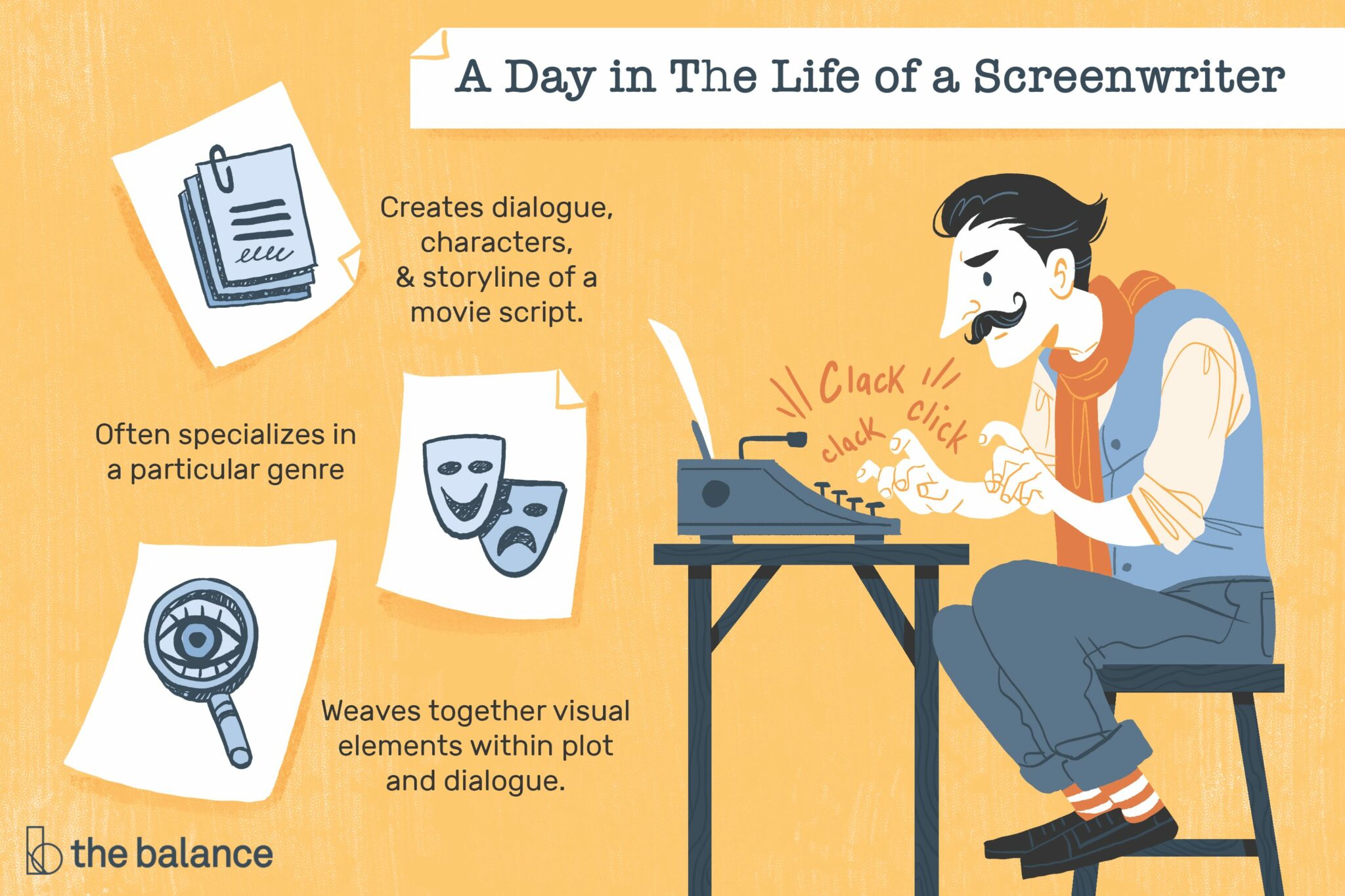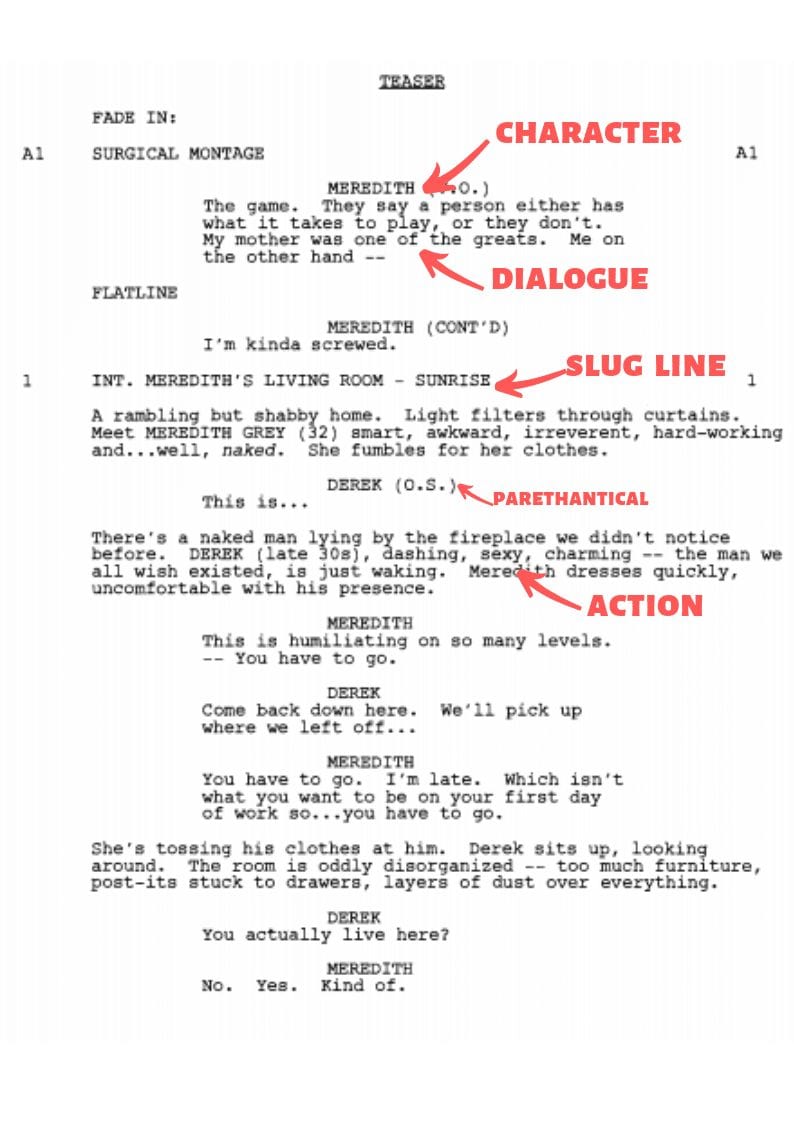When you are casting for a part in a movie script, it can be difficult to know which is the best format to use.
You need to choose between a screenplay or teleplay because of the differences in the structure of the script.
Here is a comparison between the two formatting styles and how they affect the end result of your story.
TELEPLAY vs SCREENPLAY vs SCRIPT
Teleplay vs Screenplay vs Script?
When trying to decide between teleplay, screenplay, and script formats for your next project, it’s important to know the differences.
A teleplay is a type of screenplay that is formatted for television productions while screenplays are designed specifically for film.
Scripts are usually just called scripts or scripts with no specified format in mind.
In movie script format, the screenplays act as the guide to the storytelling throughout the entire length of the script.
This is what all movie script producers or agents look at when deciding whether or not to read your script.
The format of a movie script will give you the framework to tell a story and build the foundation for everything else that occurs within the script.
Each scene within the script should have a clear beginning, middle, and end so that viewers will have a good understanding of the plot.
Teleplay Vs Screenplay Vs Script
A movie script will contain many different scenes, each of which tells a specific part of the story. It could be a long scene or a short one.
The end product will depend entirely on the amount of time and effort that went into structuring the script.
When deciding between a screenplay vs. teleplay, you must determine what fits your story best.
If you cannot put together a strong plot or compelling characters, your movie script will fail to achieve its full potential.
On the other hand, a teleplay, or short script, is quite different than a screenplay. In a teleplay, there is often a great deal of free flow within the story.
There are multiple characters who are not necessarily connected to one another in any way. There are also numerous locations and circumstances throughout the course of the script.
As a director or screenwriter, you will need to take all of these aspects into consideration before you start writing the teleplay.
You will need to decide where the conflict will take place, what the central conflict will be, and how the other characters and other aspects of the story will interact with it.
Another important consideration is timing.
Where will the conflict occur, and when is the most appropriate time to bring it to the forefront of your audience?
Do you need to show something specific happening for the protagonist, or will the audience be satisfied with whatever happens?
You will need to decide these things early on in order to make certain you have the best ending to present to your script.
In the case of a screenplay, the end result will be much more definite.
The story arc has been established, there are recognizable characters, and the endpoint has been reached.
If you do not plan on changing the course of the story at any point, you can rest assured that your teleplay will be fine as is, and your
Screenwriting Is About (attempting To) Avoid Problems
However, many screenwriters go about writing their scripts in a way that would make them face a lot of problems.
They often begin working on a screenplay based on a movie script, adapting it to their own needs and whims.
They also begin working on a script that has already been written by someone else.
Screenplay adaptations can be hit or miss, often being unable to carry the same tone as the original.
If your movie script is written according to the standard Hollywood rules, adapting it to your own needs will almost always be difficult.
That is why many beginning screenwriters seek out expert advice from professionals who know which kind of work goes where.
If you are an aspiring screenwriter and have decided to work on your script based on a movie script, do so as a hobby.
Write for enjoyment, and only do it when you have completed a substantial amount of work on your teleplay.
This way you will have the time to make sure the final product is a quality script, rather than a mess of a screenplay adaptation.
Following this advice will ensure that your story is a success.
How To Write A Script For A Video
At first, there is always an idea … and then there is a wall, a big white wall. Your personal Moby Dick, an impossible climb you have to make if your idea ever saw the light of day. And that wall is an empty page.
Whether you’re writing on paper or on the screen, that empty space that needs words is a scary and scary task, even for the most experienced professionals.
How To Write A Script For A Video?
When it comes to filmmaking or video, the script is the absolute first step to take.
Shaping the full script that is working is the foundation on which your project will be built. You have to correct it or fall all over. Now that holiday screen has a whole movie that drives on it.

No pressure, right?
Here’s the good news: you can do it completely. It’s a tough job, and you have to follow the formats, structure, and many rules, but it’s not as impossible as it might look at in the beginning.
Below we offer a mix of philosophical, mechanical, and logistic approaches to screening scenarios.
This is not just a physical production of a document. It’s about getting you the best you can. And more importantly: it is about reaching readers and audiences.
Write Each Day
This is not just about scenarios, but about any type of writing. The finished work is an elusive animal living in it that does not want to be captured. Comes from a place within which he does not like the light of day.
Think of this hunt without killing: to find your quarry, you can not lose track. Give him some sweat, at least an hour every 24 hours. Accept this reality before you learn the first thing about the scripts.
Organise Key Elements
Now that you commit to writing routines, it’s time to get to your horrible idea. Before writing a word script, capture the essence of the script – story, plot, and characters – with these three basic tools:
History Content
This should be short, not more than several pages. Here is a description of what’s going on in your story.
It’s a great map of pictures of travel in front, serving as a compass to track you during a letter. Set the circumstances.
Describe the challenges you will face. Explain the resolution to everything. Short, sweet, easy.
Scene By Scene
Make a set of notes – a digital or index card – and write down what’s going on in each of your movie’s scenes on each note. Single scene scenes represent 3-4 minutes of screen time.
Put 30 of these notes together, you’ve reached the standard length of the movie (90-120 minutes).
Customize this formula for shorter works (ads, YouTube, etc.). Be detailed, use graphics tags, lists, and other tricks to gather information. From here you will be issuing your script.
You Have Five Pages To Win Them Over
Here, at the beginning of your script, you are ready for the scroll. Do you remember how I said earlier that you have to connect the reader?
Well, that must happen quickly.
In the real world, people who read scripts are professionally sick of reading scripts. If you literally do not care about the first five pages, you will throw your work in the trash and move on to the next one.
I know – it’s sharp. But that’s the way it is. Even friends and family will quickly lose interest.
So make sure everything that’s horrible about your script makes a big splash right behind the bat.
Filling The Gap
There is an old trick to the script known as the “white space”. This means there are not many words on a lot of pages and leaves a lot of blank space.
Every time the script has a big grid of descriptions or dialogue, it usually means trouble. We already know that readers have little attention.
The writer must also believe cast and crew to add her initial vision. So do not block the script. Economize your words.
Say more with less. It not only facilitates reading but opens up space for cinematic cinematography.
Get Another Perspective
At some point, after you’ve learned all the rules after you’ve told the story and the plot after you’ve met your characters – forget it all.
Let your fingers work on the conversation. Believe in the story and let your characters speak for themselves.
Yes, there are goals you have to direct the activities that people have to say. But stories and people in them have more to say than you might know.
Let your creation use you as a host. Release the submission subliminal. I know that sounds like roots, but let me tell you that the possession of the story is a strong feeling.
At the end of the day, have you ever written the best damn thing or ended up dissatisfied with your final product – congratulations! You’ve finished the script!
Do you have any idea how few people actually do it? Be proud of your achievement, no matter what the outcome.
This is a great skill you’ve taken and one that will always teach you about the movie, about writing, and about yourself.







